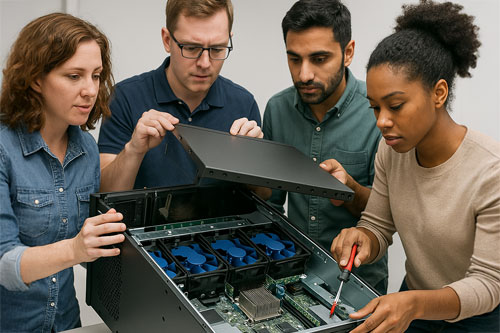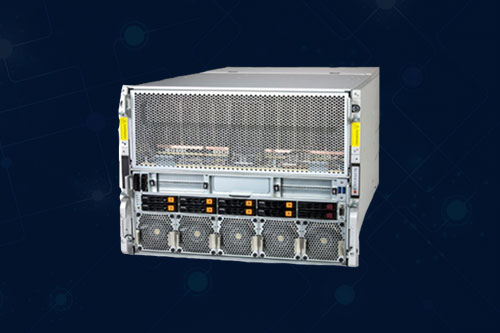Retailers are relying more and more on artificial intelligence. And the reason is simple: AI technology can help retailers engage customers, lower operational costs and increase revenue.
Indeed, over 70% of retailers anticipate a significant ROI from AI in the next year, according to accounting firm KPMG.
Their customers approve of AI, too. In a poll conducted earlier this year by vision AI provider Everseen, two out of three consumers said AI makes shopping more convenient.
That’s a true win-win scenario.
Customer-facing
On the retail customer side, AI provides helpful features such as support chatbots and personal shopping assistants. AI can also offer visual search, letting customers upload photos of products they like and find similar items in real time.
AI is also capable of creating personalized recommendations that go far beyond the typical “people who bought X also bought Y” message.
For example, the AI behind Amazon’s industry-leading recommendation engine takes into account a customer’s shopping habits all the way back to the time they first created an account. Then the engine combines that data with whatever demographic information it can dig up or infer. The result: Customers receive genuinely useful suggestions.
Amazon also has a retail-focused chatbot called Rufus that can answer online shoppers’ questions about a products they haven’t bought yet, but are only considering. To do this work, the GenAI-powered shopping assistant has been trained on a potent mix of data that includes the entire Amazon catalog, customer reviews, community interviews and information from the public web.
This lets consumers ask Rufus just about anything. For example, “Are these shoes good for narrow feet?” will get an answer. And so will “Can this sharpener create the 16-degree angle recommended by the maker of my fancy Japanese chef’s knife?”
If you’re looking for a bit more wow factor, consider the Sephora Virtual Artist. This AI-powered virtual try-on feature uses your smartphone’s augmented reality (AR) to show how you’d look with a particular shade of lipstick, eye shadow or other makeup.
Don’t care for one shade? Sephora’s AI will suggest a better one based on your skin tone. Then it will find your color in stock at a store near you—along with a complimentary foundation, blush and eye liner.
Behind the Scenes
Deploying AI helps retailers save time and money. That’s especially true for those with big warehouses and complex supply chains.
Both Walmart and Amazon employ small armies of AI-enabled robots to zip around their warehouses. These tireless heavy-lifters find what they’re looking for by scanning bar- and QR-codes. Once they locate a product, their robotic arms grab it off even the highest shelf. Then the robots efficiently transport the products to their shipping departments.
These AI-powered robots can also report to other parts of the system, many of which use AI as well. One example is an inventory-control AI module that forecasts demand and makes sure the warehouse stays well-stocked. Another is a bot designed to manage complex supply chains by calculating trends, market prices, availability and shipping times.
Increasingly, retailers rely on AI for marketing too. They use retail bots to keep an eye on customer sentiment and emerging trends by scraping online reviews and social media posts. This information can also help retailers deal with customer-service issues before they get out of hand. And AI systems provide vital market data that retailers can use as they plan and launch new product lines.
Retail Power
Retail AI software is hugely powerful, but the hardware matters too. Deprived of enough power to collect, analyze and act on terabytes of daily data, AI is just reams of pointless code.
So retailers rely on purpose-built retail AI hardware solutions. That includes the Supermicro AS -2115HE-FTNR server.
This retail AI-server is powered by 5th gen AMD EPYC processors and has room for up to 6TB of ECC DDR5 memory and four GPUs. Retailers can also configure the system with up to 6 hot-swappable drives and their choice of air or liquid cooling.
The improved density in Supermicro’s multi-node racks helps retail organizations achieve a lower total cost of ownership by reducing server counts and energy demands.
Retail’s Future
AI is becoming more sophisticated every day. Soon, powerful new features will catalyze a paradigm shift in retail operations.
As agentic AI changes from a fascinating new design to a daily mainstay, hyper-personalized, frictionless and predictive digital online shopping will eventually become the norm. Retail stores will standardize AI-enabled smart shelves that control inventory, display dynamic pricing and direct shoppers to related items.
Behind the scenes, AI will help retail organizations further cut waste and lower their carbon footprints by better managing inventory and supply chains.
How long will we have to wait for our new AI-powered shopping experience? At the rate things are moving these days, not long at all.
Do More:
- Learn more about Supermicro’s solutions for the retail
- Explore AMD's solutions for retail and e-commerce












